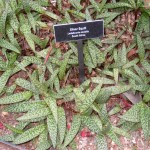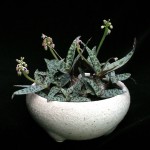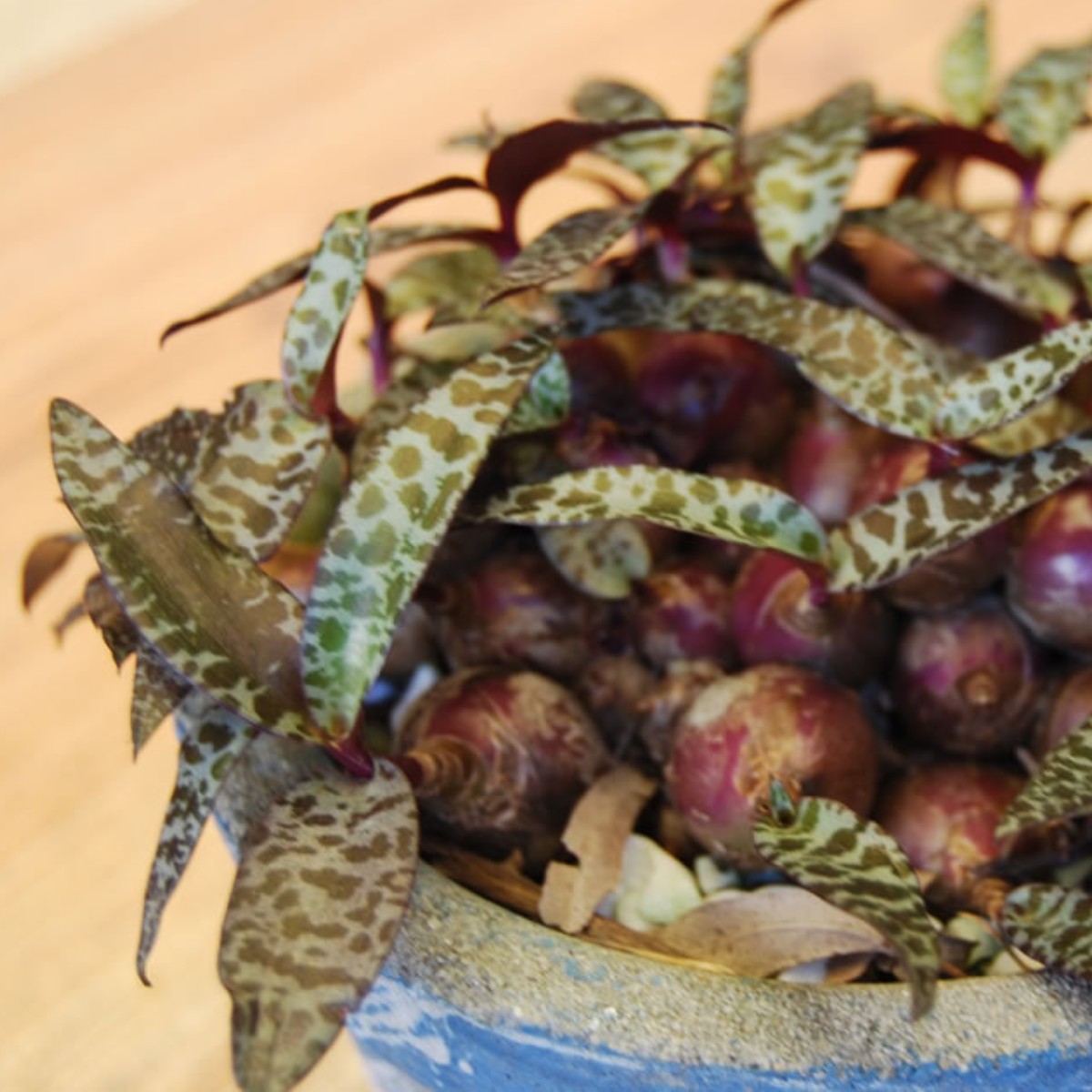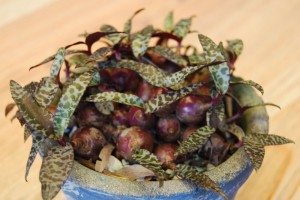Family: Asparagaceae
Synonymous: Ledebouria violacea
Scilla paucifolia
Scilla socialis
Scilla violacea
Distribution and habitat: Ledebouria socialis is a geophytic species of bulbous perennial plant native to the Eastern Cape Province of South Africa. It grows in arid savanna in summer-rainfall regions where it is found in fine to medium grained shallow to deep well drained humus rich sandy soil. It usually grows in shade mostly in closed evergreen woodland. This species has mottled leaves enabling it to blend into its thicket backdrop.
Description: Ledebouria socialis is a small evergreen perennial bulbs in thick clusters that survive drought as effectively as any succulent. It has fleshy, stalkless, broadly lance-shaped, pointed leaves 5-10cm (2-4 inch) long. Leaf upper surfaces are silvery blotched and banded with olive green and the undersides are deep violet. Dense clusters of tiny, green flowers edged with white are produced in spring on flower stalks 8-15cm (3-6 inch) long. The bulb is small, epigeal (exposed), about 1cm (0.4 inch) in diameter, purplish in colour with a transparent tunic. These plants produce offsets profusely, so that a tightly packet cluster of small bulbs can cover the surface of a pan of potting mixture within few years.
Houseplant care: Ledebouria socialis is often cultivated as houseplant and grows well with minimal care. They do have a winter rest period, but their leaves remain decorative throughout the year.
Light: Ledebouria socialis require bright light with three to four hours a day of direct sunlight.
Temperature: During the active growth period, normal room temperatures are suitable for Ledebouria socialis plants. During the rest period keep them at 10-15C (50-59F), if possible.
Watering: During the active growing period water them moderately, allowing the top centimetre (0.4 inch) or so of the potting mixture to dry out before watering again. During the rest period water these plants only enough to prevent the mixture from drying out.
Feeding: Apply liquid fertiliser to Ledebouria socialis once a month during the active growing period.
Potting and repotting: Use a soil based potting mixture and plant Ledebouria socialis bulbs in pans or half-pots. Pot up the bulbs in the spring, but no more than three bulbs in a single 10-15cm (4-6 inch) pot. Space the bulbs evenly over the surface and bury only the bottom half or each bulb in the potting mixture. During the fist four or six weeks do not feed the plants and water sparingly, allowing the top half or the potting mixture to dry out between waterings. When the new roots should be well established, treat the plants in the normal way. Break up overcrowded clumps every two or there years.
Propagation: To propagate Ledebouria socialis break bulbs away from clumps after the flowers have faded (normally in late spring) and pot them up as recommended above on Potting and repotting section.
Toxicity: All parts of plant are poisonous if ingested.
Uses: This plant is suitable for growing indoors. It is very happy sitting in window sill too. It can be grown outside where there is no danger of frost. It is drought-tolerant and therefore it is suitable for xeriscaping.
SUMMARY:
CHARACTERISTICS:
Foliage variegat
Features flowers
Shape upright
Height: under 15cm (6 inch)
PROPER CARE:
Watering in rest period sparingly
Watering in active growth period moderately
Light bright
Temperature in rest period min 7oC max 18oC (45-64oF)
Temperature in active growth period min 16oC max 24oC (61-75oF)
Humidity low
Hardiness zone: 10a-11






